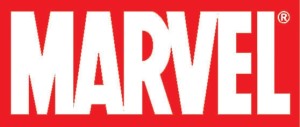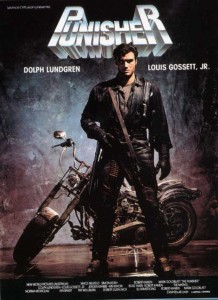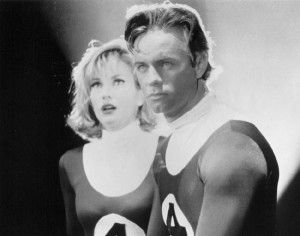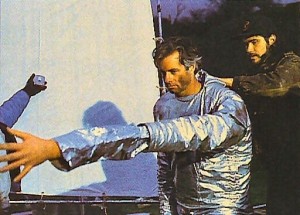In a multi-part series, Comic Book Film Editor William Gatevackes will be tracing the history of comic book movies from the earliest days of the film serials to today’s big blockbusters and beyond. Along with the history lesson, Bill will be covering some of the most prominent comic book films over the years and why they were so special. This time, we go back to a time when Marvel wasn’t the biggest name in comic book films. It wasn’t even a name.
 Nowadays, Marvel Comics is leading the way when it comes to comic book adaptations hitting the big screen, with a number of their comics being made into successful films. DC Comics isn’t having the same kind of luck, as any attempt at a comic book franchise outside of Batman doesn’t garner much success.
Nowadays, Marvel Comics is leading the way when it comes to comic book adaptations hitting the big screen, with a number of their comics being made into successful films. DC Comics isn’t having the same kind of luck, as any attempt at a comic book franchise outside of Batman doesn’t garner much success.
But it wasn’t always this way. From the 1970s to the 1990s, DC ruled the cinematic roost starting with the Superman franchise and then the first time around with Batman. Marvel, on the other hand, well, they weren’t having any luck at all.
To be fair, DC’s case was helped by the fact that they were owned by a major movie studio, Warner Brothers. Marvel, on the other hand, was in a state of disarray. How bad was it? According to Jim Shooter, Marvel’s licensing people during the early 80s thought the Amazing Spider-Man and the Spectacular Spider-Man were two different characters and licensed them for two separate films.
One of those licenses might have been to Cannon Films, who picked up the rights because the studio thought that a film about a man who transforms into a giant tarantula might make a pretty good horror flick (yes, Cannon thought Spider-Man was a man who morphed into a spider. I’ll talk about this more when we get to the Spider-Man films).

The closest Marvel got to a feature film in the early 80s was a Dazzler feature, which got its start as an aborted co-branding attempt with Casablanca Records meant to capitalize on the disco trend. The character would be created for the comics and be used as an alias for a real disco singer. Problems at Casablanca Records caused that idea to fall to the wayside, but a feature film proposal sprung from it and briefly interested Bo Derek as the lead. Eventually, that fell apart, too.
In 1986, the year when Marvel’s first property to hit the big screen, Howard the Duck, arrived in theaters, Marvel was purchased by New World Pictures. New World was a smaller studio, known for B-Movies such as Rock ‘n’ Roll High School, Children of the Corn, Tuff Turf, C.H.U.D. and many more. Not an impressive resume, but gave hope that more Marvel heroes would make it to the big screen. New World Pictures did help one character make it to the big screen—The Punisher, but unfortunately only overseas.
 The Punisher was set to join Batman on the silver screen in the summer of 1989. It even shared a bit of controversy over the casting of Swedish Dolph Lundgren as Frank Castle. Several changes were made to the comic book origin—Castle has two daughters , not a son and a daughter, he was a police detective and not a military man, a car bomb does his family in, not assassins, and he never wore a white skull on his chest.
The Punisher was set to join Batman on the silver screen in the summer of 1989. It even shared a bit of controversy over the casting of Swedish Dolph Lundgren as Frank Castle. Several changes were made to the comic book origin—Castle has two daughters , not a son and a daughter, he was a police detective and not a military man, a car bomb does his family in, not assassins, and he never wore a white skull on his chest.
The film was pretty much universally panned, although I seem to recall that it was no better or no worse than the other shoot ‘em ups of the day. It quite possibly could have done very well in the U.S. if it was released here, but, unfortunately, financial troubles at New World cancelled its stateside release.
 This could have been considered the halcyon days of this period for both Marvel and Marvel Films, as it only went downhill from here. New World Pictures sold Marvel to the Andrews Group in 1989, and the machinations of that owner almost destroyed the comic company financially. New World Pictures would not make another Marvel film.
This could have been considered the halcyon days of this period for both Marvel and Marvel Films, as it only went downhill from here. New World Pictures sold Marvel to the Andrews Group in 1989, and the machinations of that owner almost destroyed the comic company financially. New World Pictures would not make another Marvel film.
21st Century Film Corporation would, however. As a matter of fact, they were supposed to make two. The company, a subsidiary of Cannon Films known primarily for The Phantom of the Opera: The Motion Picture, starring Robert Englund, Eraserhead and the 1990 remake of Night of the Living Dead, acquired the rights to make films based on Spider-Man and Captain America. They would only film the latter, and that film would be 1990’s Captain America.
The film had its moments, but it had its problems, too. The Red Skull was made Italian. I have no idea why. Indiana Jones was fighting Nazis just the year before and made millions doing it. The suit was made by the same people who made the suits for Batman, and looked good except for the rubber ears they put on the outfit. The film does somewhat stay true to Cap’s origin and the “man out of time” aspects of his mythos, but the plot, which involves an American president being targeted for assassination by the military industrial complex because of his environmental platform was a bit too out there even for a conspiracy nut like me.
Captain America, like The Punisher, was released overseas but went straight to video in the States. That, however, was better than our next Marvel film, which was never released anywhere—and was never meant to. That film was the now legendary 1994 version of The Fantastic Four.
 The tale of the first Fantastic Four film is a tragedy. It starts in 1992. Neue Constantin Films owned the rights to make a FF film and was trying to raise the $40 million dollars for a feature with no luck. The rights were set to expire at the end of the year and it was clear that Marvel was not going to let Constantin Films renew their option on them. There was a loophole in the rights issue—if Constantin was able to get a FF film in production by New Year’s Eve, 1992, their claims to the rights would automatically be renewed (Sony and Fox currently hold a similar agreement with the Spider-Man (Sony) and X-Men and, coincidentally, Fantastic Four (Fox) rights, which is why we keep getting origins and reboots on those franchises).
The tale of the first Fantastic Four film is a tragedy. It starts in 1992. Neue Constantin Films owned the rights to make a FF film and was trying to raise the $40 million dollars for a feature with no luck. The rights were set to expire at the end of the year and it was clear that Marvel was not going to let Constantin Films renew their option on them. There was a loophole in the rights issue—if Constantin was able to get a FF film in production by New Year’s Eve, 1992, their claims to the rights would automatically be renewed (Sony and Fox currently hold a similar agreement with the Spider-Man (Sony) and X-Men and, coincidentally, Fantastic Four (Fox) rights, which is why we keep getting origins and reboots on those franchises).
 Constantin entered into an agreement with B-movie legend Roger Corman and his production company, Concorde Pictures, to make a quick, low-budget Fantastic Four film. The budget was an unbelievably low $1.4 million dollars.
Constantin entered into an agreement with B-movie legend Roger Corman and his production company, Concorde Pictures, to make a quick, low-budget Fantastic Four film. The budget was an unbelievably low $1.4 million dollars.
Just to put that figure into perspective, the Dolph Lundgren Punisher film, which was shot five years prior and didn’t have anywhere near the special effects shots that a good FF film should have, cost $9 million to make.
This resulted in some of the corniest special effects you’d ever want to see. Most of the budget, it seems, was sunk into the Thing costume, which looks halfway decent. Johnny Storm only flames on fully at the end of the film. And the stretching effects for Reed were limited primarily to his arms and legs and then the effect was essentially putting a glove on a stick and waving it around. I’m not kidding.

That being said, the cast and crew, who were operating under the belief that the film was going to be released, gave their all to try and make the film a faithful adaptation of the comic using the limited resources they had. Several of the actors put up their own money to help promote the film and get a big time premiere at the Mall of America. But it was all for naught. The film would never be shown, anywhere, anytime.
There are two schools of thought over why the film was not released. One was that Constantin never intended to release the film at all, and essentially lied to all parties involved in the production just so the film could be made. Another says that Avi Arad, who would become head of Marvel Studios two years after the film was due to be released and helped usher in the success Marvel has had in recent years, paid Constantin and Concorde to shelve the movie because he didn’t want such a cheap production to taint the brand. Regardless, the film was never released either here or abroad, and only exists in a popular bootleg version you can find at most comic book conventions.
All three of these films have been rebooted, sometimes more than once, by Marvel in recent years. But these versions still stand as a reminder of a time when Marvel didn’t have the world of Hollywood all figured out.
The 1990s beckon, and there’s a lot to cover. But first, we’ll take a look at the films made from international comics, starting with Jane Fonda’s most famous nude scene and the Oscar nominated adaptation of the Iranian revolution.




